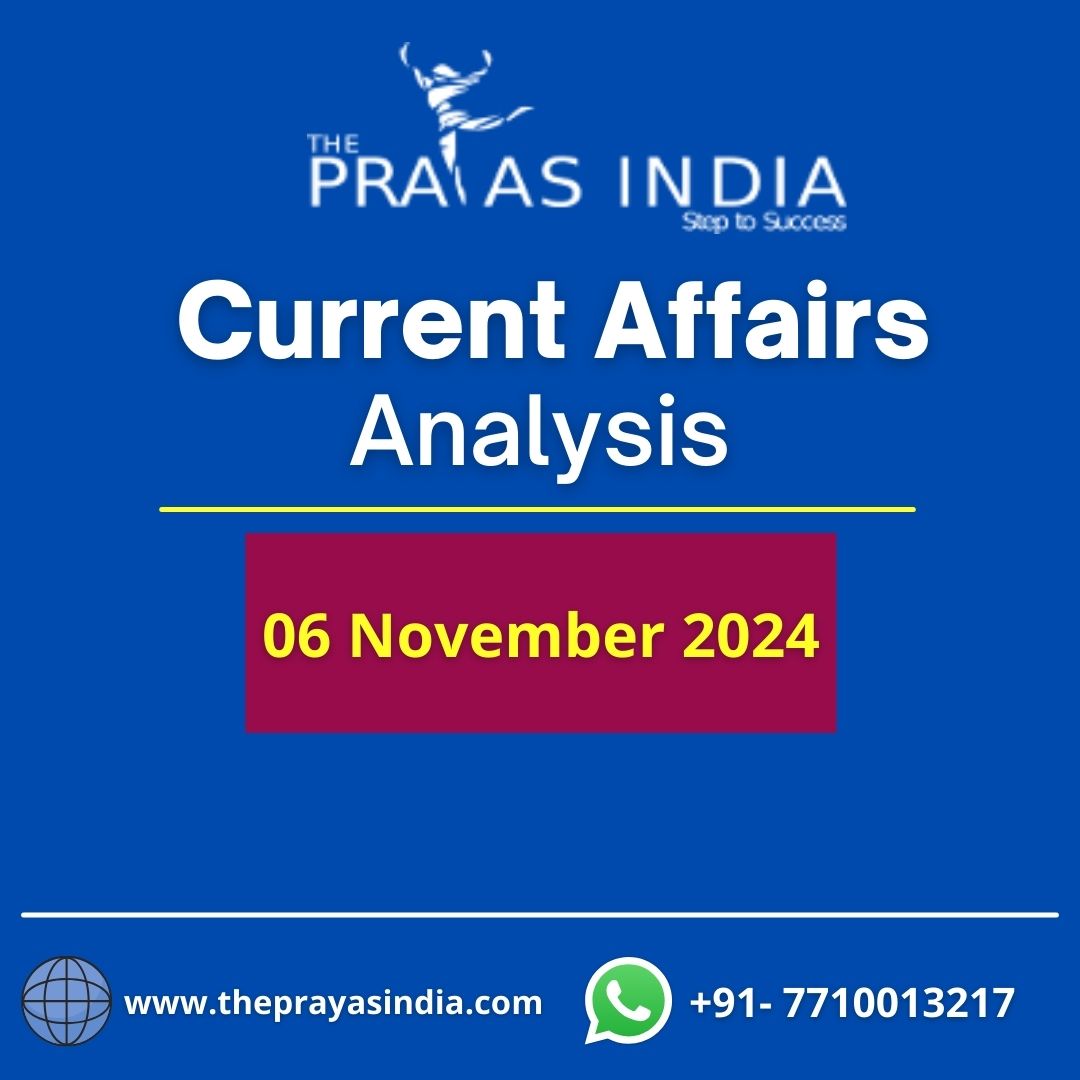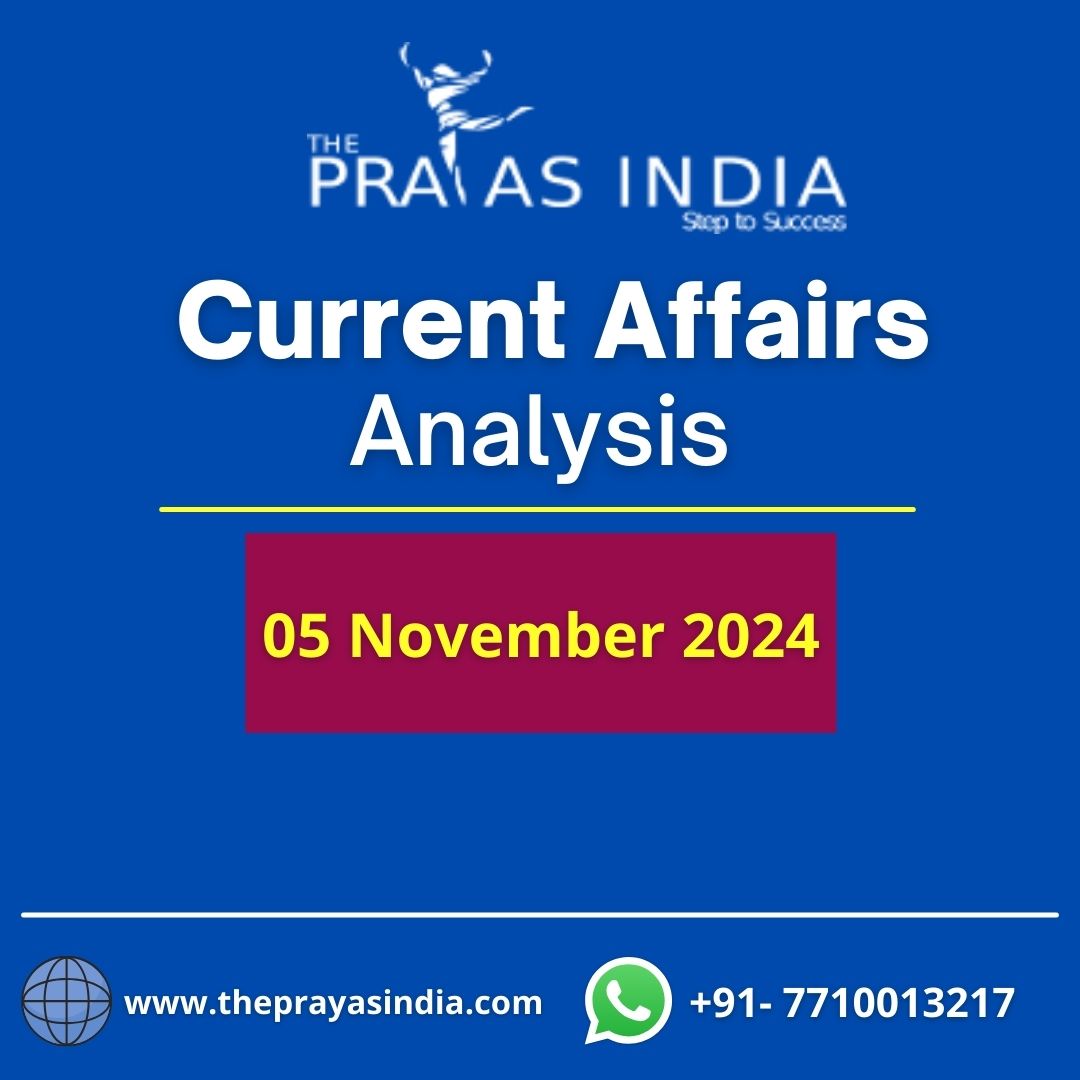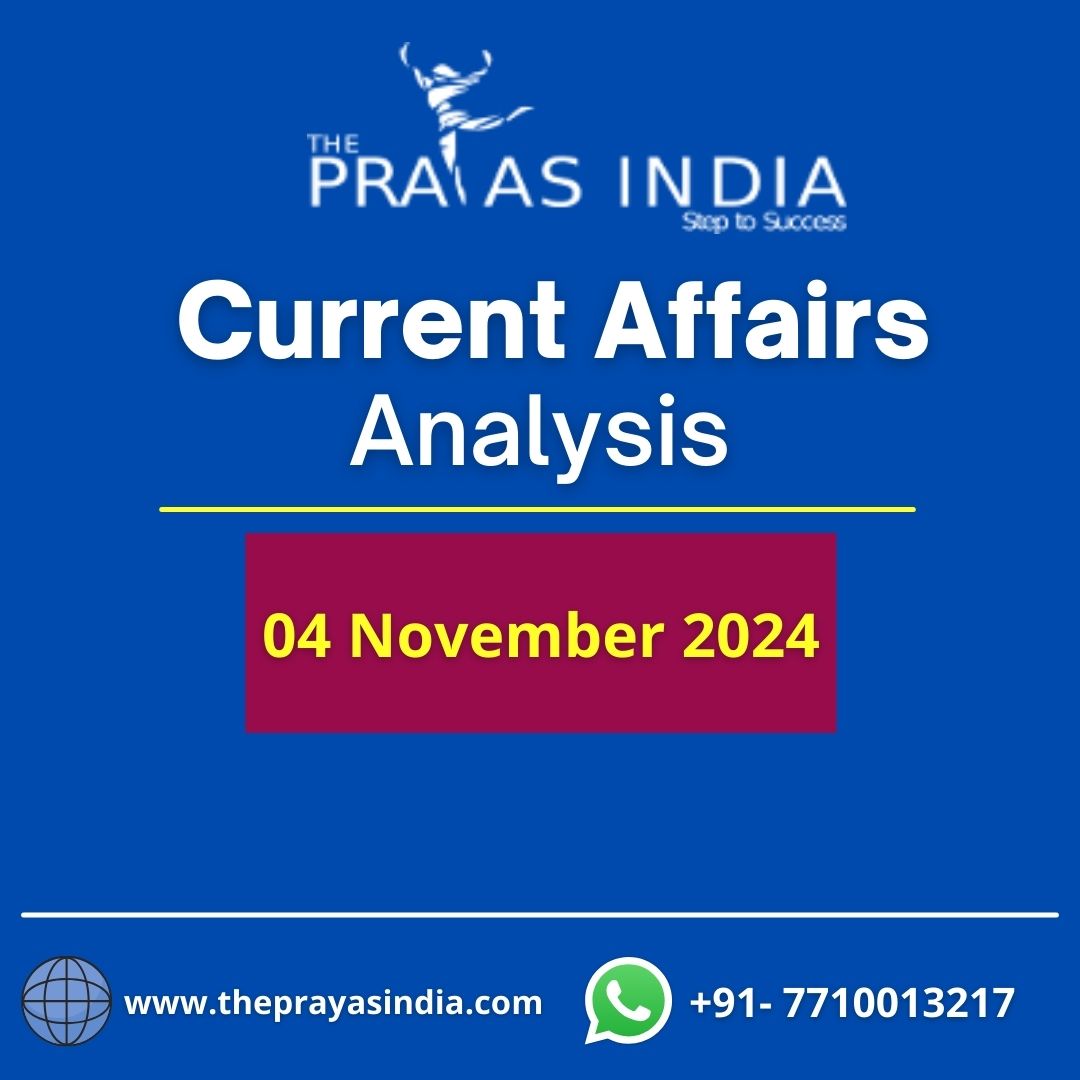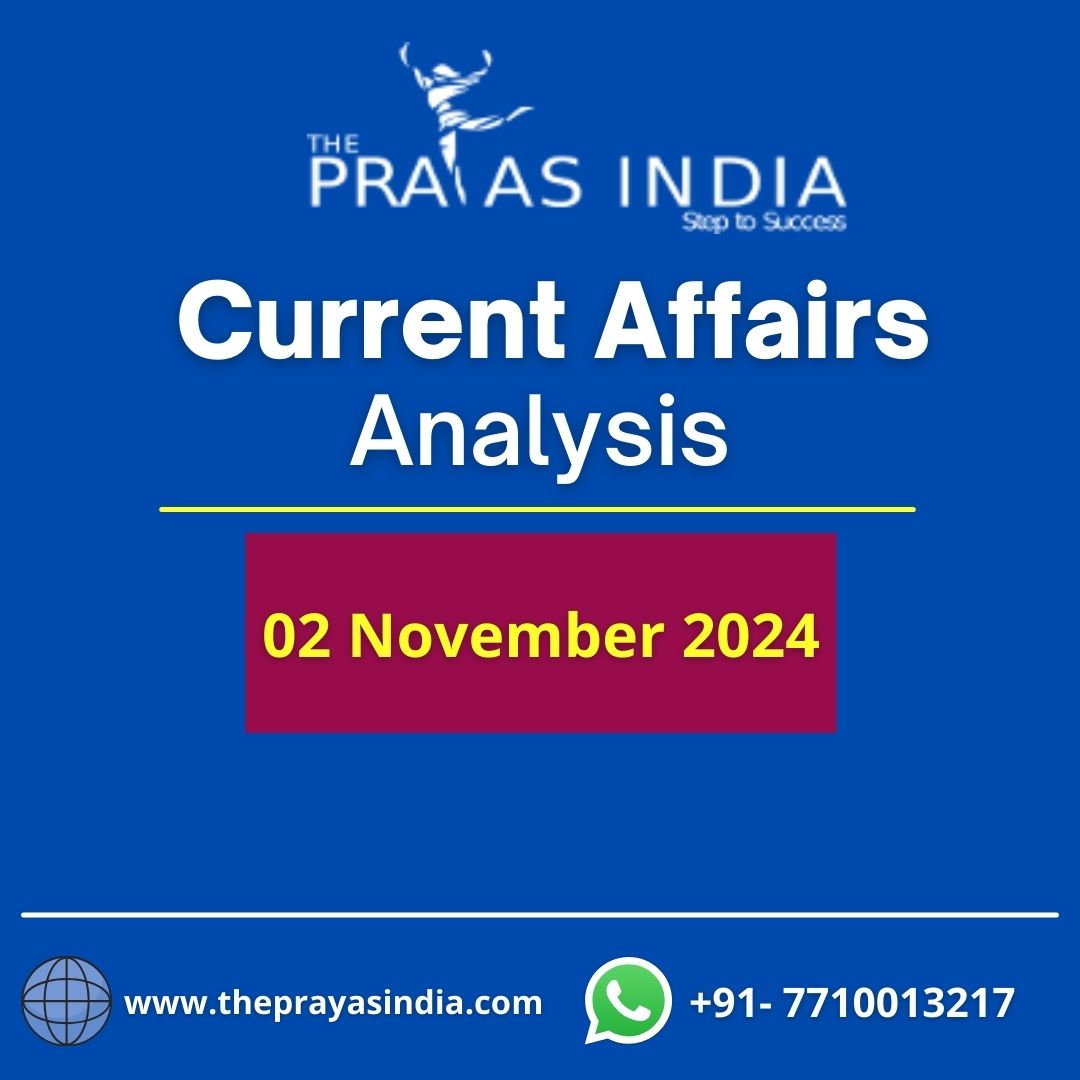DAILY CURRENT AFFAIRS ANALYSIS
| S. No. | Topic Name | Prelims/Mains |
| 1. | Preventive Detention | Prelims & Mains |
| 2. | CAG | Prelims & Mains |
| 3. | 3 D Printing | Prelims & Mains |
| 4. | Zozila Tunnel | Prelims & Mains |
1 – Preventive Detention: GS II – Judiciary-related issues:
Context:
- The Supreme Court stated that preventative detention laws in India are a holdover from colonialism and give the government arbitrary power in a judgement on Monday, April 9, 2023.
What Is Preventive Detention?
- Anybody who has been detained or imprisoned is entitled to protection under Article 22 of the Indian Constitution.
There are two types of detentions:
- Preventive detention is the term for when a person is held in police custody only due to a suspicion that they would commit a crime or harm society.
- Anyone suspected of committing a crime may be detained by the police, and in some cases, arrests may be made without a warrant or the approval of a magistrate.
- Punitive detention is defined as detention as a result of a criminal offense. After a crime is committed or after an attempt is made to commit the crime, it occurs.
What are the main highlights of the statistics from the National Crime Records Bureau (NCRB)?
- The highest number of Detention: By the end of 2021, there were over 24,500 people in preventative detention, which was a record high since the NCRB started keeping track of this data in 2017.
- Federal and state territories: In terms of States, Tamil Nadu, Telangana, and Gujarat had the most preventative detentions in 2021; while, in Union Territories, Jammu & Kashmir had the most of these detentions (UTs).
Laws Concerning Prevention:
- National Security Act: The NCRB data indicates that fewer individuals were arrested in compliance with the NSA in 2021 than in 2020.
- In 2020, the number of NSA preventive detentions peaked at 741. Its number decreased to 483 in 2021.
Issues:
- Misuse of other Acts: A variety of laws, including the Unlawful Activities (Prevention) Act and the Maharashtra Control of Organized Crime Act, allow for the placement of a person in preventive custody.
- Manipulation by Public Figures: In order to maintain peace and order during rising intercommunal conflicts or disagreements between any two communities, district magistrates and the police frequently detain persons in preventative detention, even if these conflicts may not necessarily culminate in widespread unrest.
- The Viewpoint of the Supreme Court A Vacation Bench of the Supreme Court stated that these powers conferred to the State were “unique” and that as they affect an individual’s liberty, they should be used with caution when overturning the preventive detention order issued for a chain thief in Telangana in July 2022.
- Additionally, the court had ruled that it was improper to use these authorities to deal with everyday law and order issues.
Source The Hindu
2 – CAG: GS II – Statutory and Non-Statutory Bodies:
Context:
- Girish Chandra Murmu, the Comptroller & Auditor General (CAG) of India, believes that the States must take action to ensure accurate accounting of subsidies, reduce budget deficits, remove revenue gaps, and maintain outstanding debts at a reasonable level.
- During the Annual Accountant General’s Conclave, Mr. Murmu said, “The States should cover their capital expenditure, including loans and advances, from their own sources of revenue, or at least confine the net debt to their capital expenditure.” He said, “We must make a line between appropriate subsidies and giveaways, which are not fiscally responsible,” while noting the importance of subsidies in helping the poor.
Who is the CAG?
- The CAG is a distinct authority under the Indian Constitution.
- In addition to leading the Indian audit and account department, he also acts as the Public Fund’s primary Guardian.
- It is the organization responsible for making sure that the government and other public authorities (those who use public monies) are answerable to the State Legislatures and Parliament, and via them, to the general public.
- Shri Girish Chandra Murmu is the current CAG of India.
What caused the CAG Office to be established?
- The Office of the Accountant General was established in 1858. (the year the British took over administrative control of India from the East India Company). Sir Edward Drummond designated the first Auditor General in 1860.
- During this time, considerable restructuring led to the Auditor General of India changing his title to Auditor and Accountant General to the Government of India.
- In 1866, the position was renamed Comptroller General of Accounts, and in 1884, it was elevated to Comptroller and Auditor General of India.
- The Government of India Act of 1919, which gave the office legal backing, allowed the Auditor General to become a non-ministerial position.
- The Government of India Act of 1935 further strengthened the role of the Auditor General by creating Provincial Auditors General within a federal framework.
- The act also provided information on appointment and service procedures as well as a succinct overview of the duties of the Auditor General of India.
- The 1936 Accounting and Audits Order specified the precise accounting and auditing duties of the auditor general.
- This method persisted till India gained its independence in 1947. When India gained independence in 1949, Article 148 of the Indian Constitution required the President of the nation to designate a Comptroller and Auditor General.
- In 1958, Jammu and Kashmir were included in the CAG’s jurisdiction.
- The federal government passed the Comptroller and Auditor General (Duties, Functions and Conditions of Service) Act, 1971 in that year. The statute gave CAG authority over the accounting and auditing duties of the federal and state governments.
- In 1976, CAG lost its accounting responsibilities.
- Due to the widespread corruption in India, CAG has quickly modernized and computerized during the 1990s. It has also remained vigilant, audited, and probed some of the worst and most divisive corruption scandals in Indian history.
How independently does the Office of CAG function?
- There are several provisions in the Constitution that safeguard the independence of the CAG.
- A warrant with the President’s signature is used to appoint the CAG, who has a six-year term or until they are 65, whichever comes first.
- The President may remove the CAG from office only in accordance with the Constitution’s prescribed procedure, which is the same as ousting a Supreme Court justice.
- He is not qualified to hold any positions with the Government of India or any state after he quits or resigns as a CAG.
- The CAG is one of the pillars of India’s democratic system of government. The list is completed by the Supreme Court, the Election Commission, and the UPSC.
A minister is not permitted to speak on behalf of the CAG in Parliament.
- His pay and other service conditions cannot be adjusted to his detriment once he has been appointed.
- Only after consulting him, the President can set the conditions of employment for people employed by the Indian Audit and Accounts Department.
- All administrative expenditures related to the office of the CAG, including all salaries, allowances, and pensions, are met out of the Consolidated Fund of India, which is not subject to a vote.
Source The Hindu
3 – 3 D Printing: GS III – Science and Technology:
Context:
- Social media is buzzing over the postal service after a picture of a building being 3D printed in Bengaluru’s Cambridge Layout quickly went viral.
- The Ulsoor Bazar post office will be housed in what is supposedly the country’s first-ever post office building, which is being built utilizing 3D printing technology. Although this technology has previously been utilized to build homes and other structures, post offices have never been built using it.
About:
- 3D printing employs computer-aided design (CAD) to create three-dimensional objects using a layering approach.
Principle:
- A three-dimensional object is produced using a CAD (computer-aided design) file in 3D printing.
- 3D printed things are created using additive processes.
- In an additive manufacturing process, layers of material are added one at a time until the final product is produced.
- Each of these layers can be viewed as a thinly sliced cross-section of the item.
- With 3D printing, we can produce complex shapes while using less material than we would with traditional manufacturing methods.
Working of a 3-D printer:
- A typical 3D printer and an inkjet printer operated by a computer are very similar.
- Fused depositional modeling is a method that requires repeatedly printing over the same area to build up a 3D model layer by layer (FDM).
- A 3D CAD drawing is converted by the printer, which runs entirely automatically, into a number of cross-sectional layers that are piled one on top of the other to create a model over the course of many hours.
What kind of “ink” does a 3D printer use?
- Unlike an inkjet printer and a laser printer, a 3D printer does not use liquid ink or solid powder.
- The 3-D printer deposits layers of molten plastic or powder, which are subsequently joined together using adhesive or ultraviolet light (and to the underlying structure).
The most common raw materials for 3D printing are the industrial thermoplastic polymers:
- Acrylonitrile butadiene styrene (ABS) and Polylactic acid (PLA) treated with polyethylene terephthalate glycol (PETG).
- Due to their mass production by the global chemical and plastics industries, these materials are readily available and affordably priced.
- The most readily available metallic raw materials include powders of aluminum and bronze, specific grades of stainless steel, a few aluminum alloys, cobalt-chromium combinations, and a few titanium alloys.
- Private enterprise and independent research groups are investing major R&D funds in expanding the variety of metals that can be utilized for 3D printing.
Benefits of a 3D-printed home include:
- could significantly reduce the total cost of construction.
- The overall reduction in building time boosts labor productivity, decreases associated carbon footprint, and allows for flexible use of natural resources and environmentally acceptable products.
Source The Hindu
4 – Zozila Tunnel: GS III – Transportation and Infrastructure related issues:
Context:
- While inspecting the strategically vital Zojila Tunnel on Monday that connects the Kashmir valley with the Union Territory of Ladakh, Nitin Gadkari, Union Minister for Transport and Roadways, declared that the goal of having an all-weather road from Kashmir to Kanyakumari will be accomplished.
- According to Mr. Gadkari, efforts are being undertaken to open the tunnel for traffic before the 2026 deadline. “We are planning to open part of the project earlier than 2026,” Mr. Gadkari stated.
About:
- Zoji La, a high mountain pass, is located in the Kargil region of Ladakh.
- The pass serves as a crucial route between Kashmir and the Union Territory of Ladakh and connects Leh and Srinagar.
- Zoji la is known as the “Mountain Pass of Blizzards.”
- Zojila Pass is closed throughout the winter due to an abundance of snowfall, cutting off the Ladakh region from Kashmir.
- In 2018, the Zojila tunnel project got under way. The longest and best-positioned bi-directional tunnel in Asia, it connects Srinagar, Kargil, and Leh in all types of weather.
Source The Hindu




